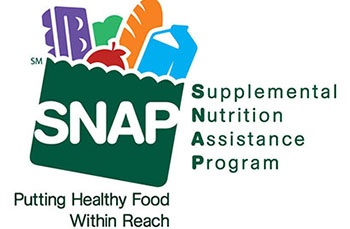<p>By Jennifer Hatcher, Chief Public Policy Officer and SVP, Government and Member Relations, FMI </p><p><img src="https://www.fmi.org/images/default-source/blog-images/snap-logo_new.tmb-large-350-.jpg?Culture=en&sfvrsn=19bc5212_2" style="float:right;margin-bottom:10px;margin-left:10px;" class="-align-right" alt="snap-logo_new" sf-size="40418" />There’s been a lot of momentum in recent days and weeks to change how millions of households receiving benefits through the Supplemental Nutrition Assistance Program (SNAP) – including those with children, seniors and people with disabilities – shop for food. Although each proposal is slightly different, soft drinks, candy, and other restrictions are in their primary focus. </p><p>But setting aside the food restrictions issue, it’s important to take a step back and re-examine the program more broadly and what’s really at stake. </p><p>SNAP is an essential, temporary hunger and food security program that supports 42 million Americans during some of their most challenging times – roughly 1 in every 8 people in this country. It has work requirements too, so that able-bodied participants have a path to work their way out of needing SNAP assistance. Participants not meeting the work requirements receive very limited assistance (only three months worth of benefits in three years), The average benefit for SNAP is $6 per day per person, about $180 per month. SNAP cannot be used for all purchases, as it restricts the purchase of alcohol, tobacco, hot ready-to-eat prepared foods and any non-food or household products.<span style="background-color:transparent;color:inherit;font-family:inherit;font-size:inherit;text-align:inherit;text-transform:inherit;word-spacing:normal;caret-color:auto;white-space:inherit;"> </span></p><p>For decades, FMI and its food retailer members who are authorized have proudly partnered with the federal and state governments to serve as the private sector partner for accessing SNAP benefits, helping Americans who are struggling to afford food focus less on their next meal and more on their next paycheck, especially during times when they are navigating elevated food prices. </p><p>Beyond the discussions to ban certain categories of food items, there are negotiations on Capitol Hill one whether or how to reduce overall funding for the program as part of efforts to streamline the federal budget and put our government on more solid fiscal footing.<span style="background-color:transparent;color:inherit;font-family:inherit;font-size:inherit;text-align:inherit;text-transform:inherit;word-spacing:normal;caret-color:auto;white-space:inherit;"> </span></p><p>While getting a handle on government spending and improving efficiency is certainly important, it can be done with an understanding and recognition of what it’s like for families to stretch a modest $6 daily benefit per person across a month of meals. </p><p>FMI believes strongly in supporting healthier food choices and we are working to demonstrate the change through creative incentive-based approaches (including those for produce and dairy) – not restrictive mandates that add complexity and remove items from the cart.<span style="background-color:transparent;color:inherit;font-family:inherit;font-size:inherit;text-align:inherit;text-transform:inherit;word-spacing:normal;caret-color:auto;white-space:inherit;"> </span></p><p>We also believe policymakers can and should consider ways we can make meaningful improvements in the administration of the program to reduce costs while preserving these modest benefits – and we want to be a partner in these efficiency improvements too.<span style="background-color:transparent;color:inherit;font-family:inherit;font-size:inherit;text-align:inherit;text-transform:inherit;word-spacing:normal;caret-color:auto;white-space:inherit;"> </span></p><p>For instance, the so-called “SNAP error rate” by state agencies, in which SNAP participants receive an incorrect amount on their electronic benefit transfer (EBT) cards, is historically high at roughly 12%, costing taxpayers more than $10 billion annually. If efficiency efforts focus first on bringing down error rates, billions of taxpayer dollars will be saved every year.<span style="background-color:transparent;color:inherit;font-family:inherit;font-size:inherit;text-align:inherit;text-transform:inherit;word-spacing:normal;caret-color:auto;white-space:inherit;"> </span></p><p>We also need to tackle the significant organized criminal fraud that occurs in the program in which criminal entities use card skimmers to steal card numbers and benefits from SNAP participants. When this happens, law enforcement needs to be engaged immediately at the state and federal levels to document where and how and to whom this is happening – to prosecute the offenders and prevent fraudulent activity. This ultimately adds significant costs to the program that could be brought down if a greater emphasis was placed on cracking down on organized crime. In fact, the U.S. Secret Service (the primary agency investigating EBT fraud federally among their other duties) <a href="https://www.secretservice.gov/newsroom/releases/2024/04/law-enforcement-agencies-conduct-ebt-fraud-and-card-skimming-outreach">estimates</a> that EBT card skimming costs institutions and consumers more than $1 billion a year. There also needs to be a process to share data and ensure criminals are not accessing SNAP benefits in multiple states. While it is important to maintain legitimate access to benefits across state lines, it is also important to prevent this as an outlet for criminal activity. </p><p>FMI is committed to strengthening SNAP’s long-term sustainability by working with USDA and state partners to eliminate waste, fraud, and abuse and to identify ways to improve program efficiency. The more effectively and efficiently SNAP operates, the greater the impact each dollar has for struggling families and the communities where they live and shop. </p><p>We remain eager to partner with USDA, state agencies, and Congress to ensure SNAP remains strong, fair, and effective – and that any changes to the program are guided by updated data, operational realities, and the needs of the people SNAP is designed to serve. </p>
[#item_full_content]



